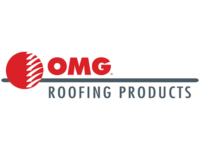Reflective White Roofing Course Garners New AIA Sustainable Design Credits
Architects wanting to get an early start on accumulating their first Sustainable Design (SD) credits under new American Institute of Architects (AIA) requirements can take a free online course on white reflective roofing offered by the Vinyl Roofing Division of the Chemical Fabrics and Film Association.
CLEVELAND, Ohio - Architects wanting to get an early start on accumulating their first Sustainable Design (SD) credits under new American Institute of Architects (AIA) requirements can take a free online course on white reflective roofing offered by the Vinyl Roofing Division of the Chemical Fabrics and Film Association.
“Cool Roofing: A Solution to National Energy and Environmental Challenges” can be accessed by visiting www.vinylroofs.org. The course has recently been approved for SD credits by AIA.
“Long lasting, energy-efficient cool roofing provides our country with a significant opportunity to reduce energy consumption and greenhouse gas emissions,” said Jay Thomas, marketing chair of the Vinyl Roofing Division. “Our course helps architects, building owners and others understand what makes one roofing material cooler than another and the positive environmental impact of choosing a reflective roofing material like vinyl.”
Among the topics covered in the course:
• How reflective roofing curbs the urban heat island effect, contributes to improved air quality, and reduces building energy costs and peak energy demand;
• Which government, green building and product rating programs address and incentivize the use of cool roofing;
• How web-based tools like energy calculators can provide an analysis of potential building energy savings; and
• The components of planted roof systems and vinyl’s role as the waterproofing layer
“A vinyl roof can reflect more than three-quarters of the sun’s rays and emit 70 percent or more of the solar radiation absorbed by the building envelope,” Thomas said. “As a result, less of the sun’s energy is absorbed by the building, reducing air conditioning energy demand. This saves money for the building owner and lowers greenhouse gas emissions from electric power generation. It’s a win-win situation for both the building owner and the environment.”
Last year, AIA modified its Continuing Education System to include 4 Learning Units (LUs) of SD study as part of the existing 18-hour annual requirement. The course is also recognized by the Construction Specifications Institute and other building industry associations that sponsor continuing education programs. For more information, contact: Wendy Schweiger of Edward Howard at 216-781-2400.
CLEVELAND, Ohio - Architects wanting to get an early start on accumulating their first Sustainable Design (SD) credits under new American Institute of Architects (AIA) requirements can take a free online course on white reflective roofing offered by the Vinyl Roofing Division of the Chemical Fabrics and Film Association.
“Cool Roofing: A Solution to National Energy and Environmental Challenges” can be accessed by visiting www.vinylroofs.org. The course has recently been approved for SD credits by AIA.
“Long lasting, energy-efficient cool roofing provides our country with a significant opportunity to reduce energy consumption and greenhouse gas emissions,” said Jay Thomas, marketing chair of the Vinyl Roofing Division. “Our course helps architects, building owners and others understand what makes one roofing material cooler than another and the positive environmental impact of choosing a reflective roofing material like vinyl.”
Among the topics covered in the course:
• How reflective roofing curbs the urban heat island effect, contributes to improved air quality, and reduces building energy costs and peak energy demand;
• Which government, green building and product rating programs address and incentivize the use of cool roofing;
• How web-based tools like energy calculators can provide an analysis of potential building energy savings; and
• The components of planted roof systems and vinyl’s role as the waterproofing layer
“A vinyl roof can reflect more than three-quarters of the sun’s rays and emit 70 percent or more of the solar radiation absorbed by the building envelope,” Thomas said. “As a result, less of the sun’s energy is absorbed by the building, reducing air conditioning energy demand. This saves money for the building owner and lowers greenhouse gas emissions from electric power generation. It’s a win-win situation for both the building owner and the environment.”
Last year, AIA modified its Continuing Education System to include 4 Learning Units (LUs) of SD study as part of the existing 18-hour annual requirement. The course is also recognized by the Construction Specifications Institute and other building industry associations that sponsor continuing education programs. For more information, contact: Wendy Schweiger of Edward Howard at 216-781-2400.
Looking for a reprint of this article?
From high-res PDFs to custom plaques, order your copy today!




